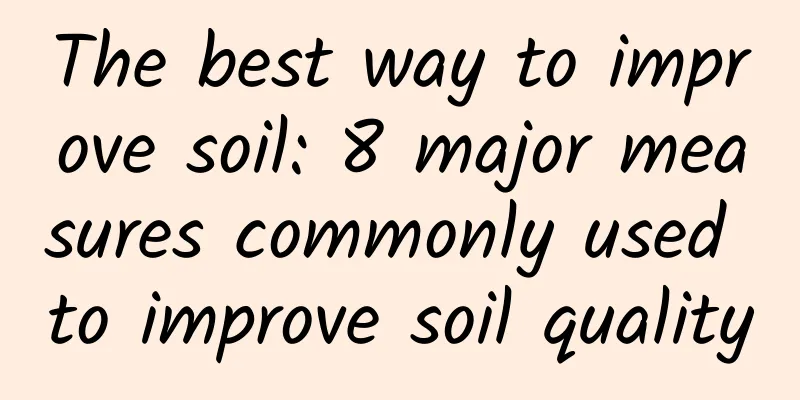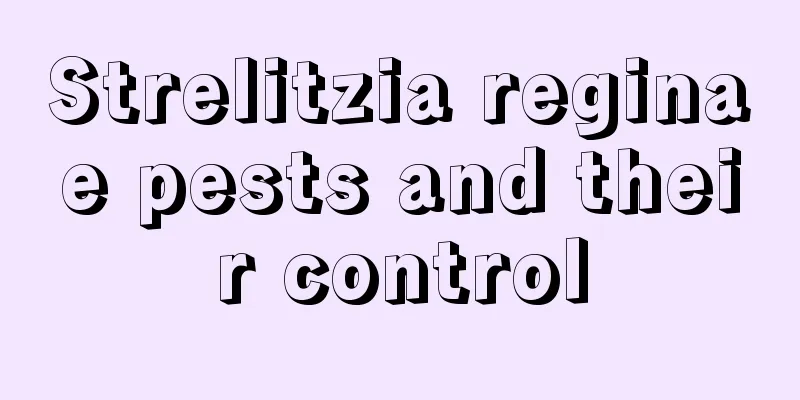The best way to improve soil: 8 major measures commonly used to improve soil quality

Use soil conditionersSoil conditioners can improve soil structure, loosen soil, balance soil pH , etc. When choosing, you need to know whether the soil is acidic or alkaline. Different soil conditioners should be selected for different soil properties. At the same time, we must also strictly follow the instructions to determine the dosage, otherwise other side effects will occur. Intercropping green manureThis method is commonly used in orchards , where crops such as alfalfa, vetch, mung bean, and sweet clover are planted between fruit trees. This can improve the physical and chemical properties of the soil, making it easier to cultivate and more efficient. These crops can also be used as feed, and are a low-cost, high-quality fertilizer source. Making good use of earthwormsEarthworms can improve the fertility of the soil . In daily cultivation, we can put some earthworms in the soil to make the soil loose and also retain water. Scientific application of fertilizersScientific application of chemical fertilizers mainly involves soil testing and fertilization, that is, deciding on fertilizers based on the specific conditions of the soil. Apply the fertilizers that match the elements the soil lacks, and apply the same amount as needed. Avoid excessive application of chemical fertilizers for high yields. Increase the use of organic fertilizerOrganic fertilizers are comprehensive in nutrients and rich in organic matter, which can effectively solve soil problems such as soil salinization and soil compaction. According to research, the high yield of orchards or farms is closely related to the high organic matter content in the soil. Adding microbial fertilizerBeneficial bacteria in microbial fertilizers can accelerate the decomposition of soil organic matter and promote the formation of aggregate structure, thereby breaking up soil compaction, regulating and improving the soil's water retention, fertilizer retention, and air permeability, making the soil more suitable for crop growth. Returning straw to the fieldReturning crop straw to the field is the most basic and thorough way to improve soil . Crop straw is mainly composed of cellulose, hemicellulose and lignin. All three substances are rich in organic carbon and gradually decompose under the action of microorganisms. Returning straw to the fields year after year is an effective way to improve soil compaction and increase soil permeability . Covering the groundAppropriate use of discarded organic matter or planting of ground cover plants to cover the soil surface can reduce water evaporation and inhibit soil alkali return, thereby reducing surface runoff and increasing the content of soil organic matter. It is best to use local covering materials, based on the principles of economy and applicability, such as some crop straw, leaves, and bark available on the edge of the vegetable garden. |
>>: What is the most effective way to kill trees? What is the best way to kill trees?
Recommend
What zodiac signs cannot grow money trees? Is it suitable to grow money trees at home?
The meaning of the money tree is quite good, impl...
How to save corn seeds
Corn Seed Introduction Corn has seeds. The maturi...
Lettuce seed germination method
There are many things to pay attention to when ge...
Disease and Pest Control of Sambucus
1. Specific diseases Because many people had only...
How to plant lotus seeds after they sprout
1. Prepare the soil To plant lotus seeds, you nee...
What kind of bottle can be used to grow lucky bamboo? How much water should be put in the bottle?
1. Water bottle selection Usually, when cultivati...
How often should tea trees be watered?
How often should tea trees be watered? Generally,...
How to make a rose arch with climbing roses
Selection of climbing rose arches Before making a...
Can rice bran be used to grow flowers (can rice bran be cooked and fermented and put into a flower pot to grow flowers)
Rice bran is a byproduct of rice, wheat and other...
Kiwifruit Management Techniques in April
As April begins, kiwifruit orchards in northern r...
How many days after watermelon seedlings can they be transplanted?
Watermelon seedling cultivation is a highly techn...
How many years can baby's breath live?
1. How many years can you live? It is a perennial...
Cultivation methods and precautions of pampas grass
1. Soil Pampas grass does not have high requireme...
Coral fern cultivation methods and precautions
1. Maintenance methods 1. Soil: Loose and breatha...
How long is the growth cycle of chicory?
Introduction to Chicory Growth Chicory mostly gro...









